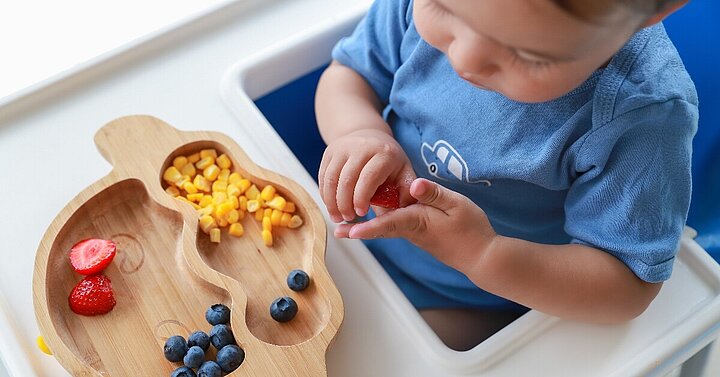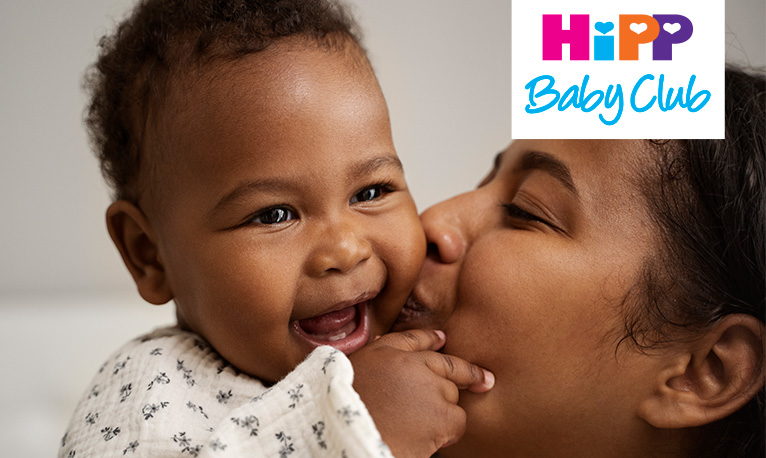How do I know if my toddler has eaten enough?
Written by Lucy Neary, Paediatric Dietitian, on the 28.06.2024

Do you ever find yourself saying to your toddler ‘one more mouthful’ or ‘one more piece and you can have pudding’. It is so ingrained in society that many of us find ourselves saying it without thinking or knowing why. So, let’s have a think about how much your child needs to eat and how you can tell if they are eating enough.
Trust your toddler
Yes, we really said that! Trust your toddler. But surely you can’t trust your often emotional, irrational child with something as important as mealtimes?! Actually, you can.
Children are very good at knowing how much food they need to eat. Even in the first days of life they communicate hunger by rooting and crying, and fullness by stopping feeding. Consider a breastfed baby; you never know how much milk they’ve taken, we simply put our trust in their cues.
Your toddler is no different, they know when they are hungry and when they are full. The problem is, many things get in the way of this process, especially being told to finish what is on the plate. Next time your child tells you they are finished why not try just saying nothing rather than encouraging ‘one more mouthful’. In the long run you’ll be helping them to listen to their body much better a skill so many of us have lost.
Get them weighed
If you are worried that your little one isn’t eating enough, the best thing you can do is get them weighed and measured by your health visitor or GP. Plotting your child’s growth on growth charts will tell you whether they are growing as they should. If they are, you can safely say that they are eating enough.
All children are different
The thing about humans is that we are all different. Our activity levels, metabolisms and appetites vary from person to person and day to day. Appetites will also change during growth spurts, heat waves (ok, maybe not so much in the UK!) and illness.
Try not to compare your child with others. You know what they say, comparison is the thief of joy and that couldn’t be truer when it comes to this subject. In fact, having worked with many hundreds (if not thousands!) of parents, I often see unrealistic expectations of how much toddlers should eat. There are surveys to back that up too; a survey of 1000 parents carried out by the Infant & Toddler forum highlighted that 79% of parents were offering their child more food than was required and 10% offering close to an adult sized portion.
Perhaps then, it’s not that your child doesn’t eat much. It’s that they don’t need as much as you think they do.
Instead of being frustrated by fluctuating food intakes, try to look at it a different way. It is a positive if one day your little one eats two bowls of cereal and another day nibbles on half a piece of toast. It shows us that they’re listening to their body just as nature intended!
How much should a toddler eat in a day?
Before we think about portions sizes we need to think about routine. Without a good structure it can be hard to
get mealtimes right.
Your toddler should be having three meals a day and two snacks, mid-morning and mid-afternoon usually works best. Aiming to leave around two or two and a half hours in between each meal or snack tends to be a good balance between not being too hangry and having a disastrous meal and being hungry enough to be interested in sitting and eating.
Don’t worry if it feels like your miles away from that at the moment, you can slowly start to work towards it by stretching out the time in between offering food.
What is the recommended serving size for a toddler?
If I think about the number of times I am asked about portion sizes, I imagine this is the bit that lots of you came here for.
I hope throughout this article you have started to come round to the idea that portion sizes are maybe not as important as you initially thought, and that being satisfied and growing well should be the markers you look out for.
As a starting point below are some suggestions but please don’t worry if your child eats more or less than this, these are a rough guide only. Each meal or snack should have a variety of food groups (dairy, fruit & veg, carbohydrates and protein – if you’d like to know more about these, you can read my article on this by signing up to HiPP’s BabyClub ), so whilst each individual food may feel a small amount, there will be other foods present to fill their tummy.
For each food group that you offer aim to give an amount that will comfortably sit in your child’s palm. For example:
- Bread: ½ a slice
- Chips: 4
- Pasta: 2-3 tablespoons
- Chicken – ¼ chicken breast
- Salmon – ¼ salmon steak
- Lentils – small bowl
- Strawberries – 3 strawberries
- Banana – ¼ banana
- Broccoli – 1 spear
What to do if my toddler doesn’t want to eat?
Picture this: you’ve spent a while making a meal you know the whole family likes, you’ve made sure no food has been eaten for a couple of hours and you’re sitting at the table leading by example. Your toddler comes to the table, takes one look and says “yuck” and walks off.
What do you do?
Firstly, as hard as it is, stay calm. Let them know that they don’t have to eat if they don’t want to, but (and this is important!) there isn’t anything else available. Offering alternatives will only worsen the situation. If your child still decides they don’t want to eat, simply let them get down from the meal if they wish to and feed them again at the next meal/snack time.
Giving independence to choose is more likely to promote eating than pressuring will. Once a child understands the boundary and that it is their choice we tend to see volumes increasing rather than decreasing.
However, this will only work if there is an accepted food available. This will give you both confidence in the situation – you know if your child says “no” it’s because they aren’t hungry and your little one feels safe that something they like is available.
To wrap all of this up in one reassuring sentence; please try not to worry about how much your child eats. It really can be as simple as this: if they are satisfied after meals and snacks and they are growing well they are eating the right amount for them, even if it doesn’t seem very much to you.



